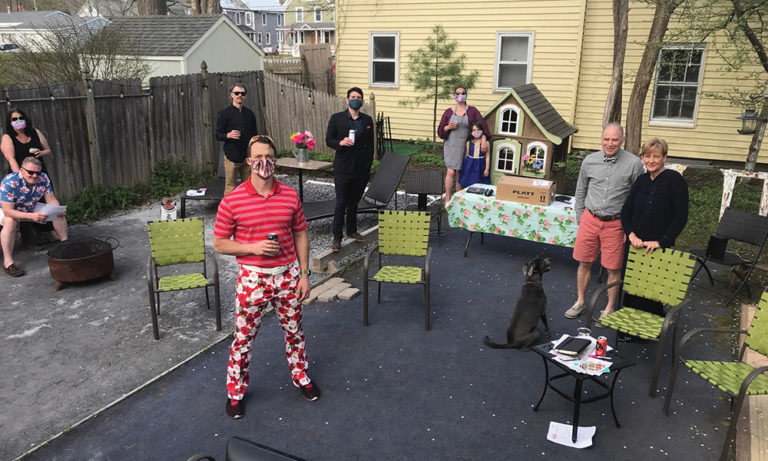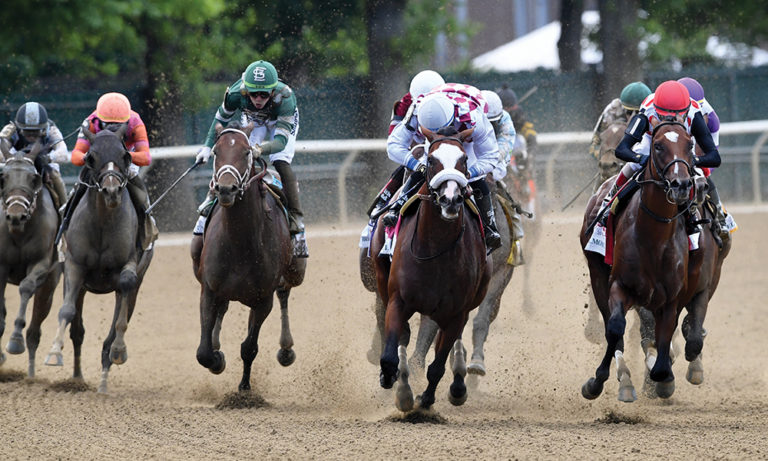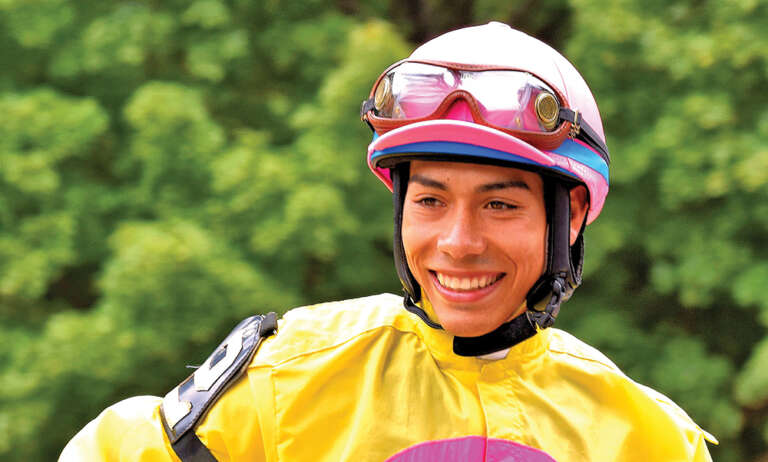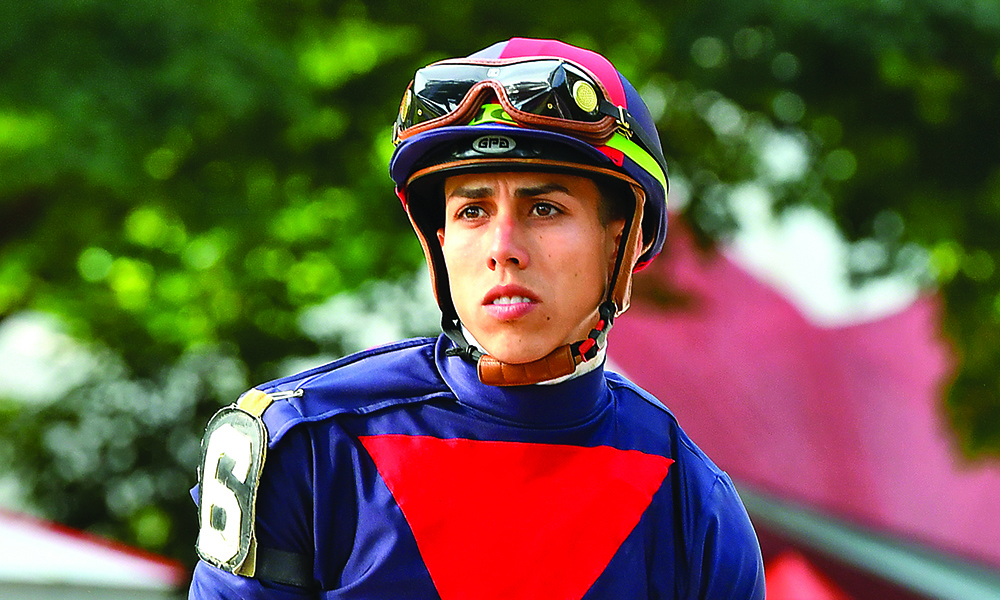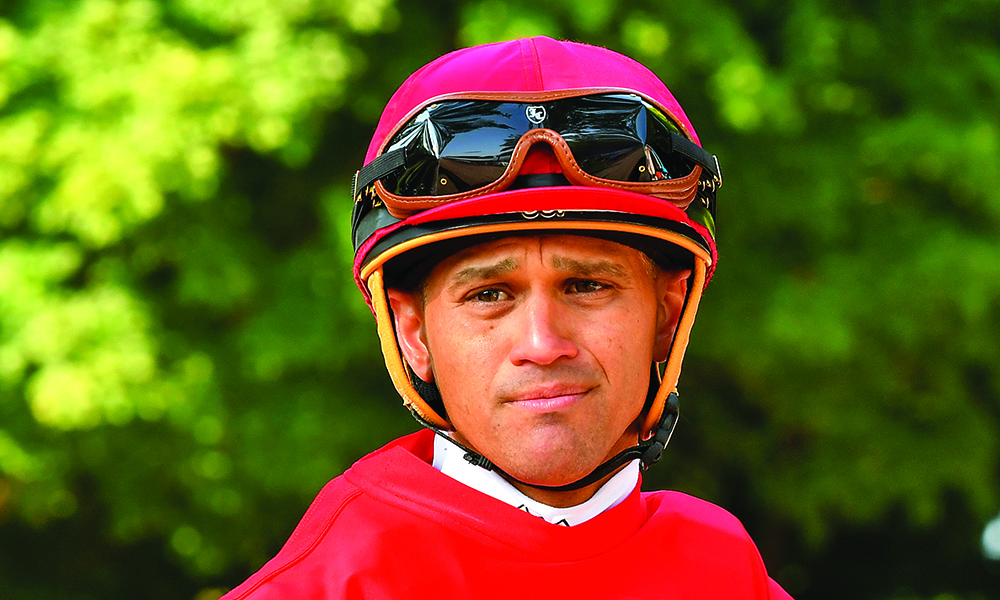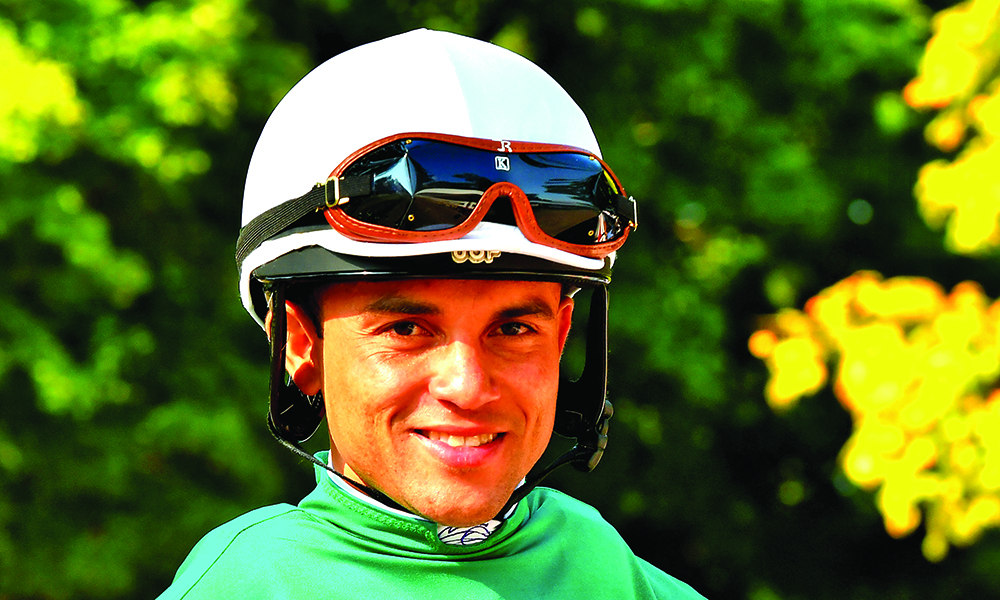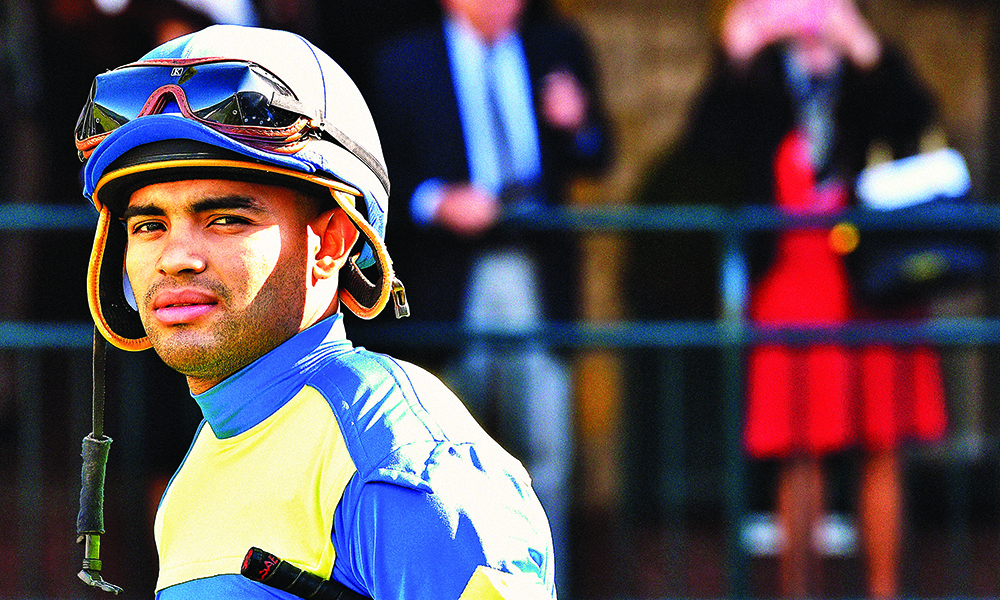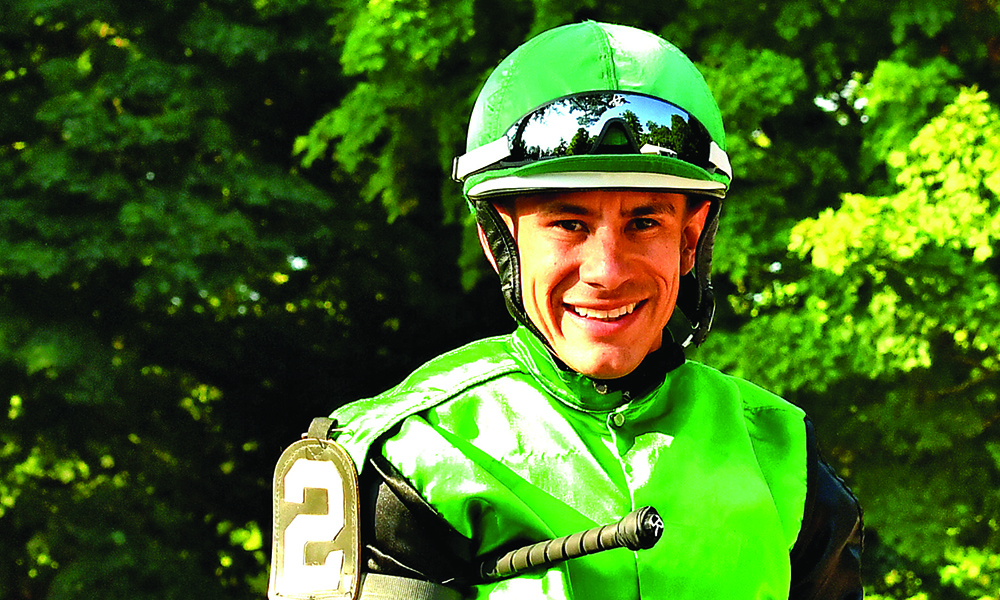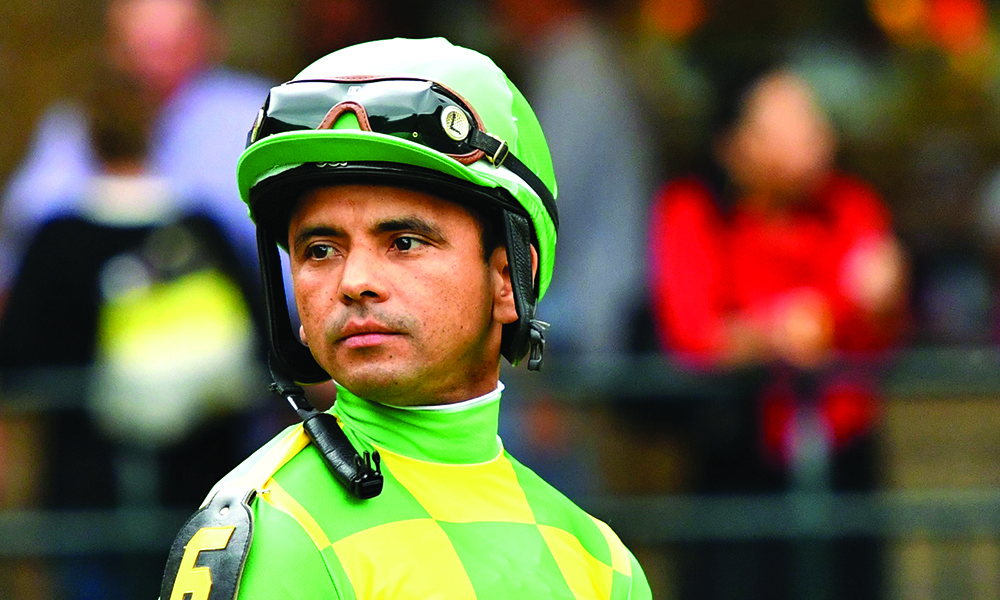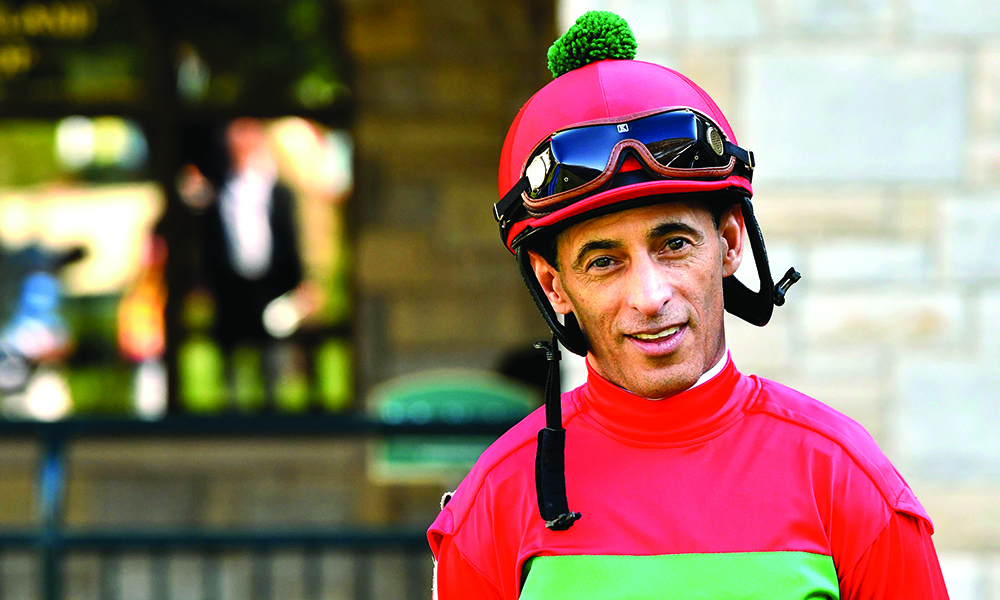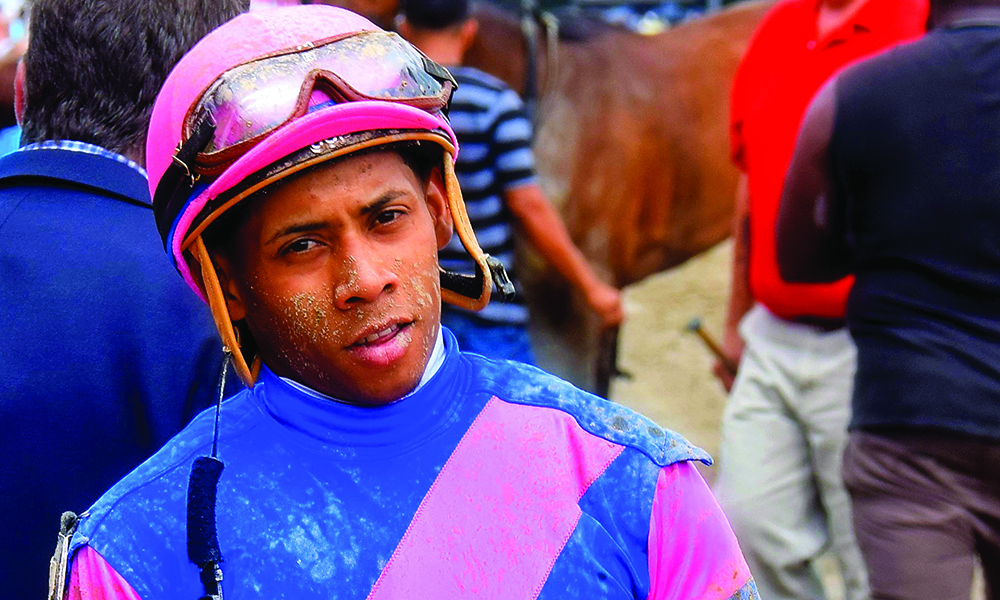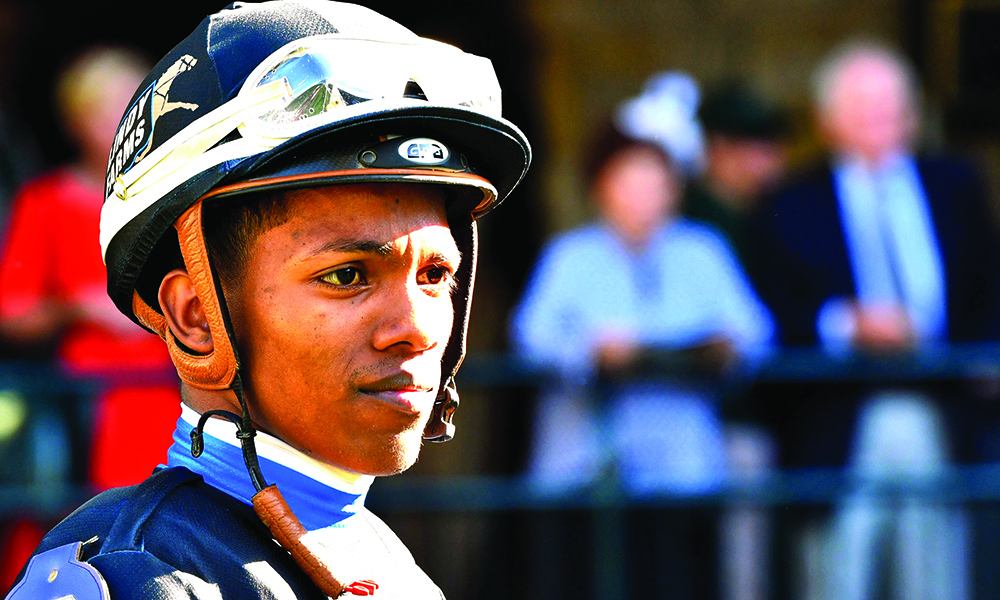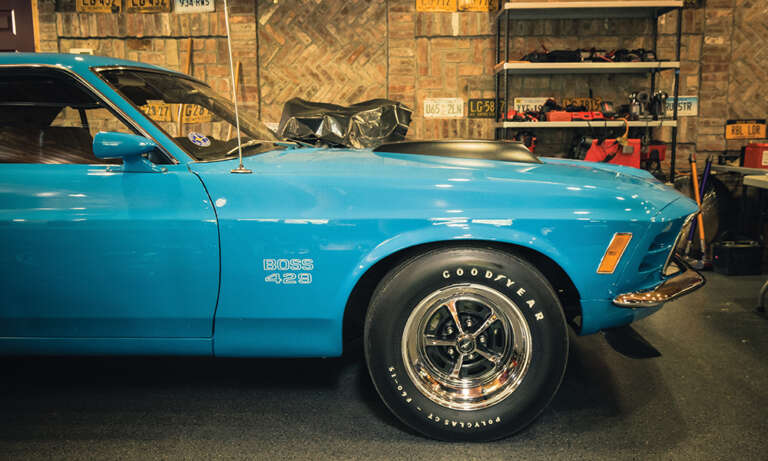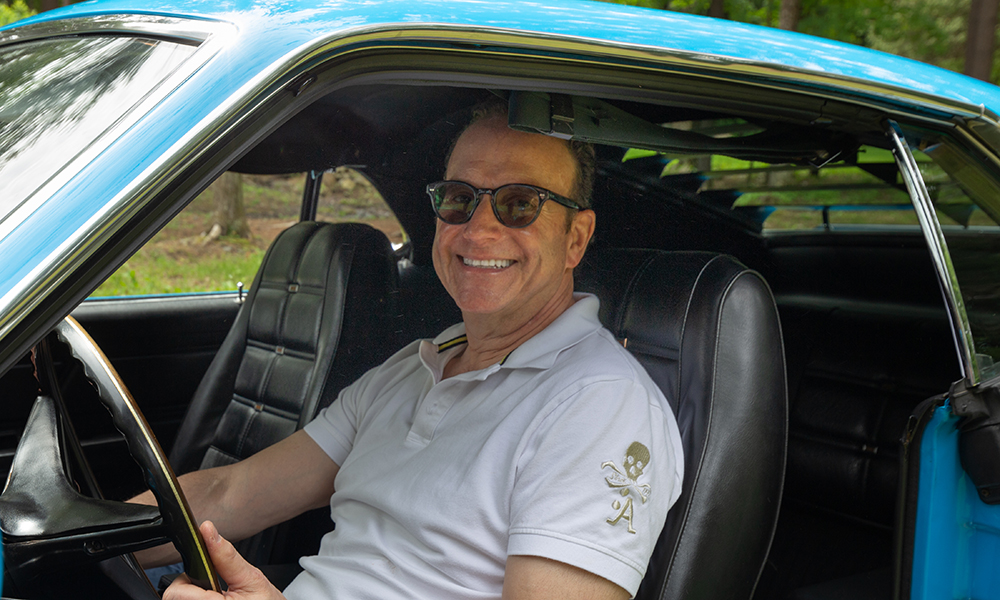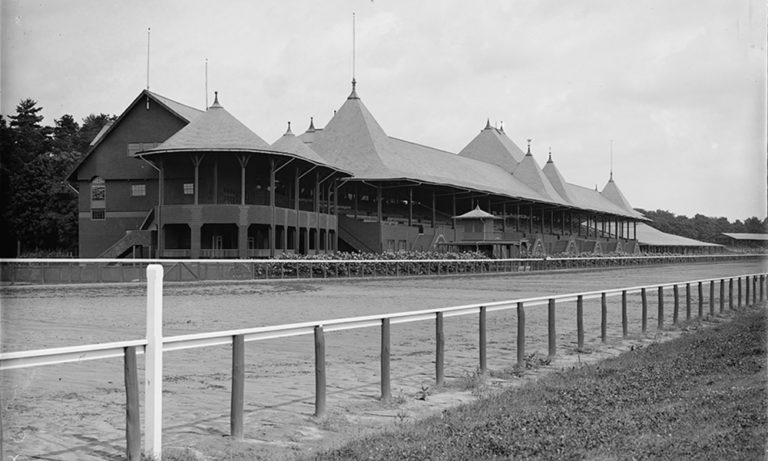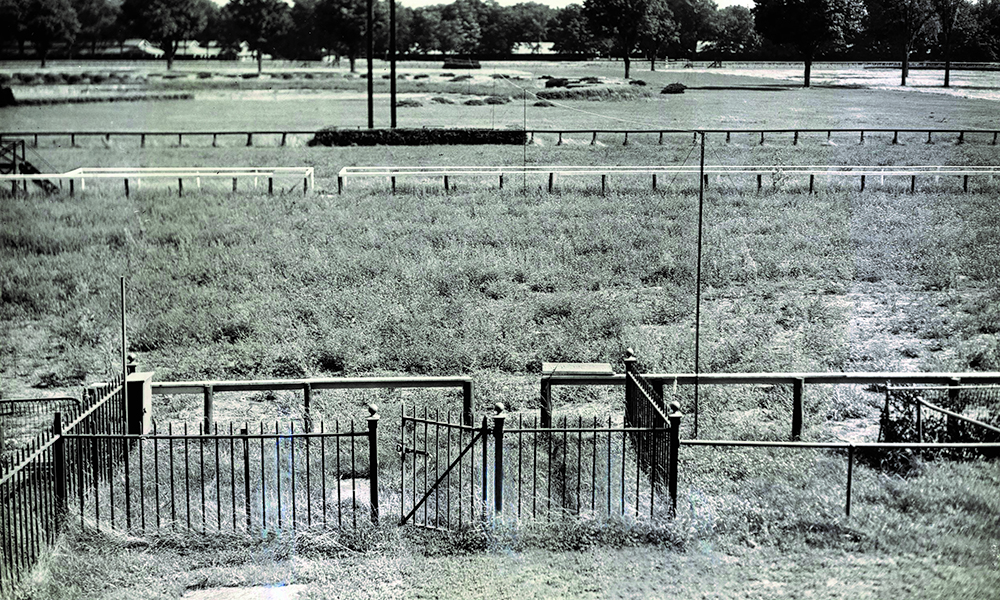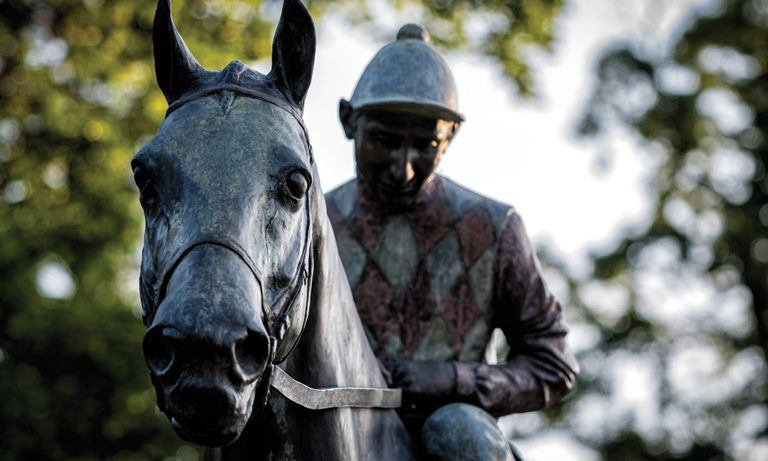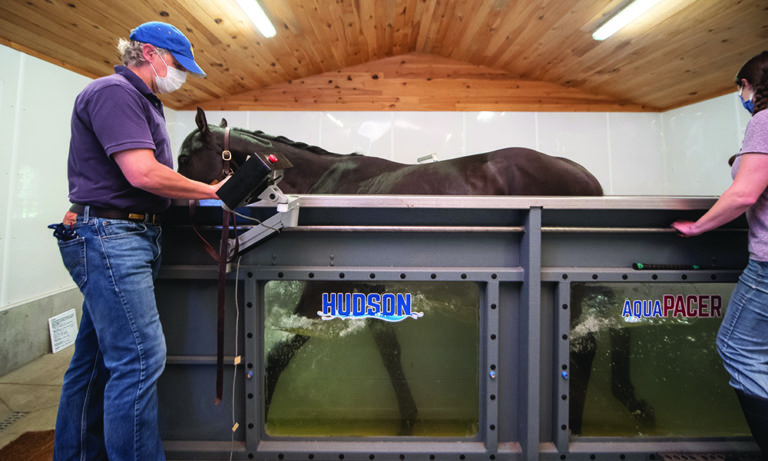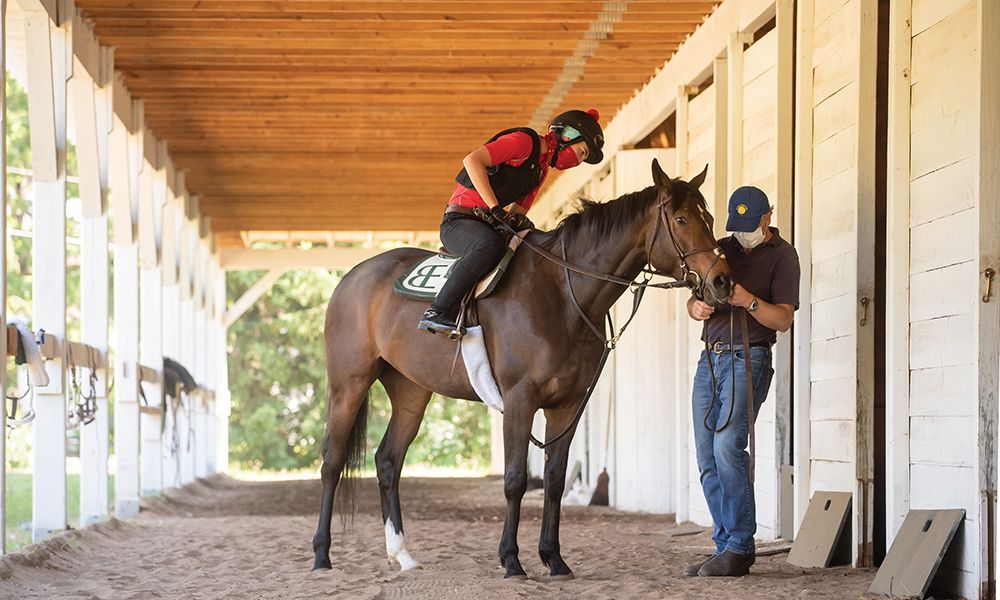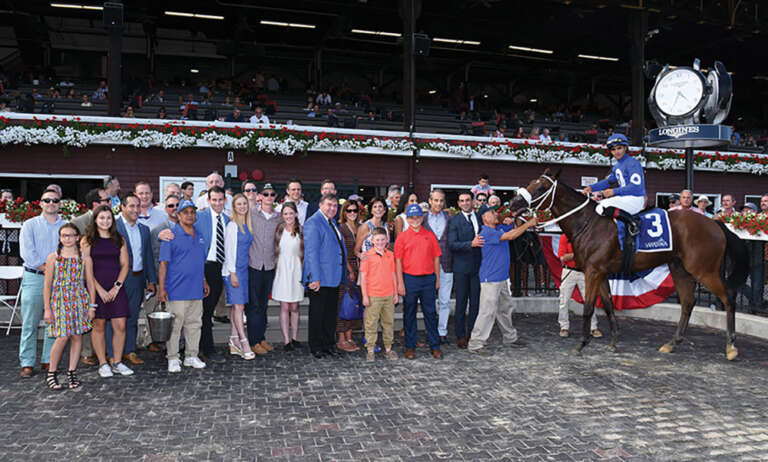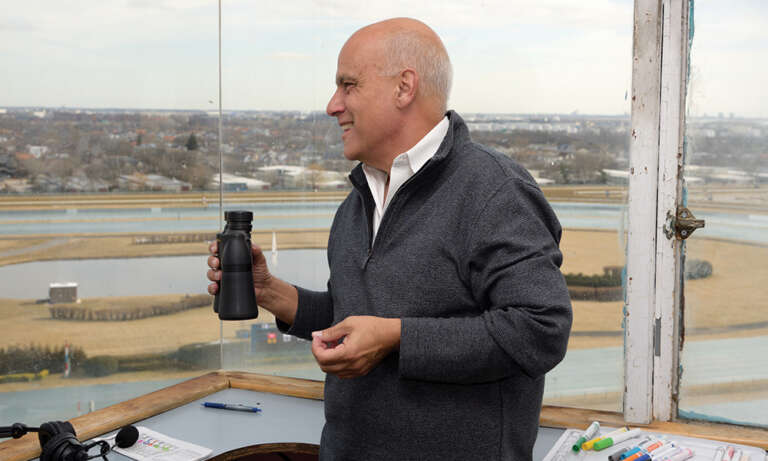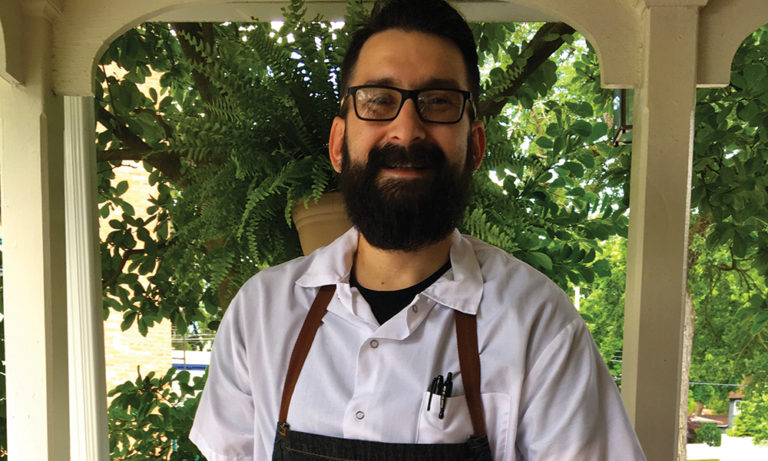It’s the Friday before the Alabama Stakes, and Saratogian Patrick Poirier’s out-of-town friends and family are descending on the Spa City. His Saratoga friends also have people coming to town, and that night, they all go out for dinner and drinks, staying out a little too late for what the following morning has in store. Regardless, a few brave souls rise with their 5:30am alarms and head to Saratoga Race Course to reserve a coveted table in the backyard picnic area. (It’s a tacit track rule that if your stuff is on a picnic table, it’s
yours for the day.) They head back home for a mid-morning nap and to pack their coolers full of sandwiches and pasta salad for the day ahead. The whole gang walks over to the track together, so they don’t have to deal with parking, and they spend the afternoon in the picnic area watching the races and placing small bets. From there, they migrate to the Horseshoe Inn Bar & Grill and eventually downtown to keep the party going. The next morning, they grab brunch before the out-of-towners head back home.
It’s a weekend anyone who’s a fan of the track would be familiar with, and one Poirier and his friends have dubbed their annual “Friends and Family Weekend.” But this year, for the first time in the six years Poirier has lived in Saratoga, it’s looking like the weekend won’t be possible, at least not in the way he and his friends and family are used to. Back in April, the New York Racing Association (NYRA) announced that racing would be taking place at Saratoga this season, but likely without fans in attendance, due to the COVID-19 crisis.
So, what to do? If the races are being run at the track, can we find a way to still have the traditional Saratoga Summer experience? The short answer is yes. The long answer is going to take a little explaining. Here’s a step-by-step guide to making the most of this exceptional Saratoga season.
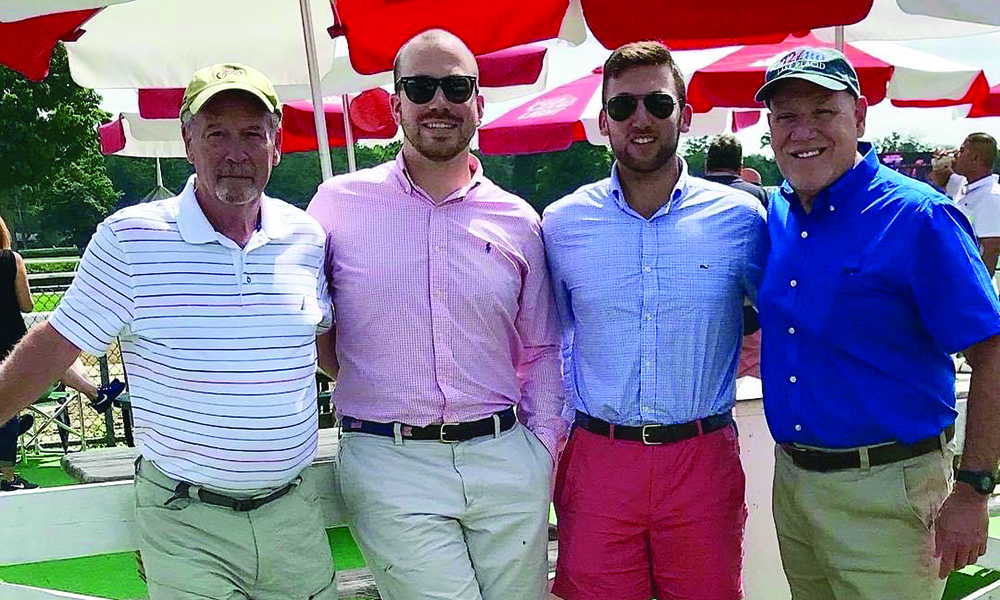
Step 1: Find a Home Base
With Saratoga Race Course most likely closed to spectators this summer, you’re going to need a new space for your friends and family to congregate. If that space is your own backyard, as it was for Saratogian Austin Bayliss when she hosted a socially distanced Kentucky Derby party back in May, perfect. If you have a larger party, like Poirier’s crew, you may need to look elsewhere. “We’ve talked about renting an Airbnb, and maybe doing a blow-up projector screen,” he says. With fewer tourists coming to Saratoga this summer, there will certainly be an abundance of available Airbnbs and rentals, so it’s definitely an idea to consider.
Step 2: Rent/buy a TV
Speaking of blow-up projectors, they’re probably not the best move for an outdoor party, as you’ll have a tough time seeing the screen in any sort of sunlight. Outdoor TVs are going to be a better bet, says Philip Hazapis, the vice president of Hippo’s Home Entertainment Center in Albany. “There are some outdoor TVs that are meant for absolute direct sunlight, so they can be anywhere,” he says. “And then there are some that are meant for a three-season room or an enclosed porch where it’s kind of inside and it’s kind of outside.” Hippo’s carries two brands of outdoor TVs—Séura and SunBrite—as well as outdoor speakers from Sonance that can be placed throughout the yard and mounted on the outside of the house for surround-sound race-watching. Or, you could just rent a TV.
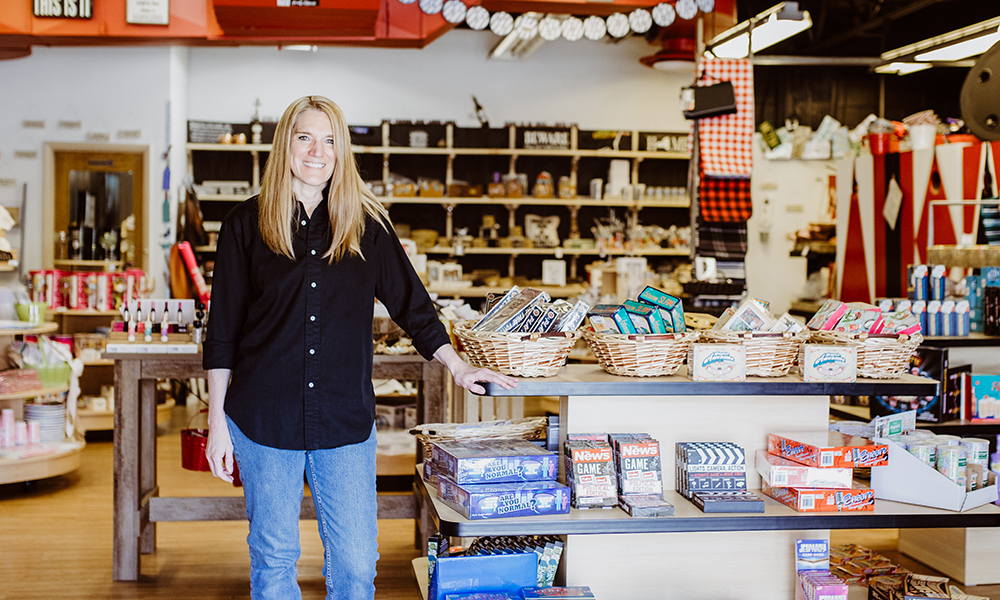
Step 3: Get Party Supplies
Since the track will likely be closed to spectators, that means you don’t have to lug chairs and coolers all the way to the picnic area. But it does mean you have to stock up on your own party supplies. A great place to start is Tailgate and Party, a new shop that opened on the corner of Caroline and Henry streets in Saratoga in June. “I have all the supplies you’d need to officially tailgate or picnic,” says owner Kirsten Lambert, a Saratoga racing fan who moved to the Spa City last year. “So, every kind of cooler, big cornhole games, a lot of the outside equipment you would need—tables and chairs and things like that.” Lambert’s store also carries traditional party supplies, such as paper plates and napkins, as well as a variety of party games. And, if you’re planning to party pretty hard, be sure to pick up one of her hangover kits.
Step 4: Make it Authentic
Derby party hostess Bayliss is the queen of themed parties, and she’ll tell you firsthand that you don’t need to be at the track to have a proper day at the races. Her party included dress-to-impress fashion, betting on the simulated Derby that ran on national TV, a call to post (played by her friend and Senior Director of Artistic Planning at the Saratoga Performing Arts Center, Chris Shiley, on the trumpet) and a merch “giveaway,” like Saratoga Race Course does several times a year. “We feigned running out of gifts, because they always run out,” Bayliss says. “For Opening Day, my daughter has a little playhouse cottage in the backyard, and we’re making it our own Shake Shack. We’re going to serve knockoff Shake Shack fries, burgers, shakes and Chicago dogs, which used to be on their menu but they took off for some unthinkable reason. We went all out and ordered the signature cardboard trays, parchment bags for the burgers, fry boats and dome shake cups.”
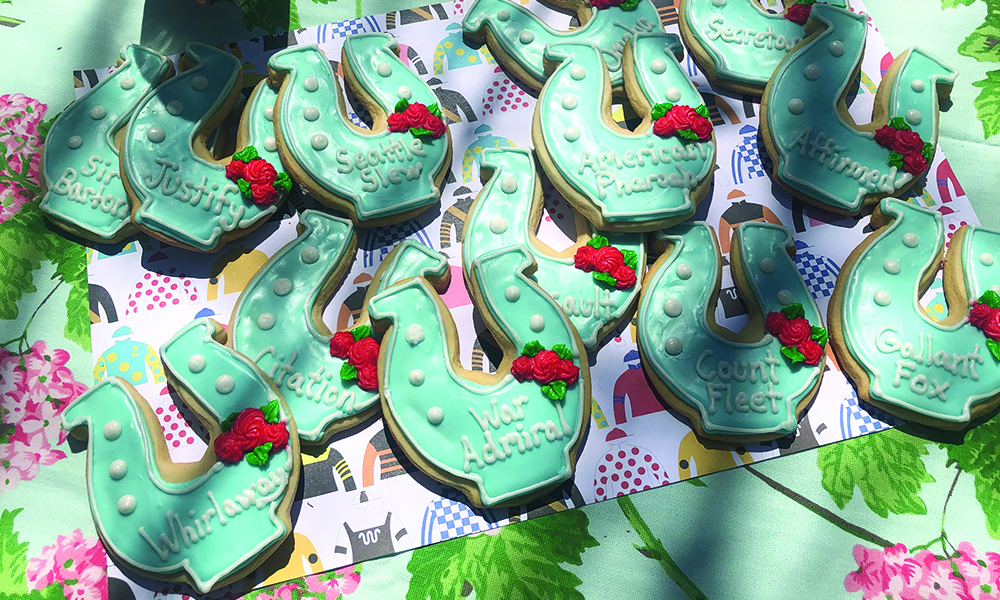
Step 5: Create a Menu
Part of the Saratoga experience is the food, so tailor your party’s menu to your favorite track snacks. Shake Shack is an obvious choice (see: Bayliss’ party), as the Saratoga Race Course location is the chain’s only one in Upstate New York, but you don’t have to settle for make-your-own milkshakes—in 2017, the fast-food titan released its first cookbook, entitled Shake Shack: Recipes & Stories, complete with 70 authentic Shake Shack recipes. If shakes and burgers aren’t your thing, order out from one of the Saratoga eateries that have popular stands at the track, such as Hattie’s or Ben & Jerry’s. And don’t forget a big, cold pitcher of Saratoga Sunrises!
Step 6: Pick Your Channel
Live racing is offered on a few channels, but for Saratoga races, NYRA TV’s Saratoga Live program, aired on Fox Sports, FS1, FS2 and the MSG Network, is all you need. NYRA TV’s coverage provides views of the races better than those of the Grandstand, as well as expert commentary and interviews with the sport’s top trainers, jockeys and owners. Watching the races on TV might not even be that big of a change for many fans: “We’ve always hung out in the picnic area anyways,” says Poirier of his past years at the track. “We’ll go out front for a few races to catch the horses right in front of us, but a lot of times we’ve just watched the races on the televisions that are back there.”
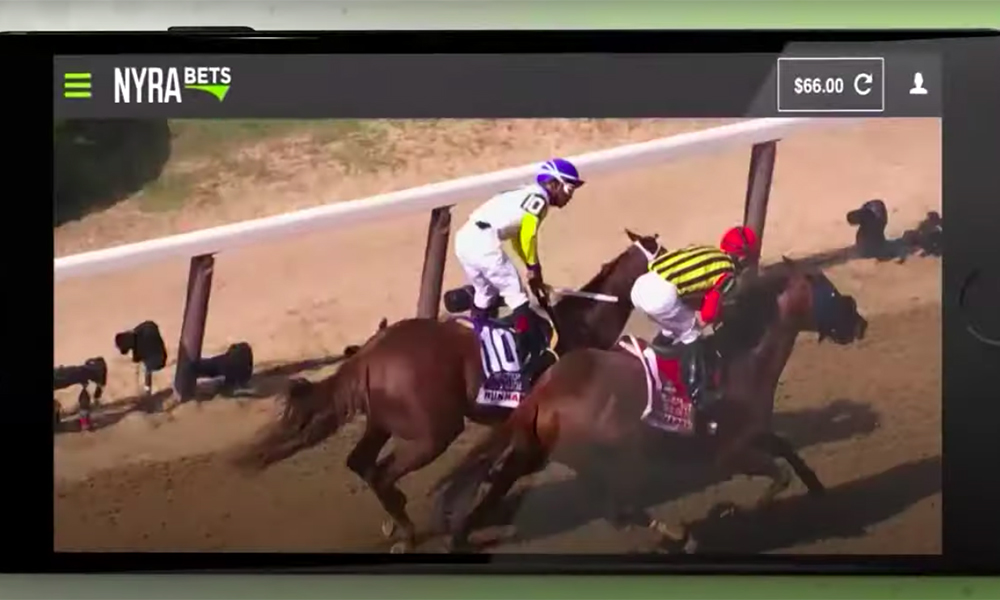
Step 7: Download a Betting App
Even if you’re not a big gambler, betting apps are a great way to make your afternoon a little more interesting. But which one to choose? NYRA Bets, TwinSpires, TVG and Xpressbet are the four major Advanced Deposit Wagering (ADW) sites that have apps, says Jerry Brown, a professional horseplayer and founder of Thoro-Graph, a wagering platform and horse data resource for bettors. The No.1 thing to look for when choosing an ADW is credibility: “There are offshore and other enterprises that are not legitimate, and in many cases, illegal,” Brown says. “You want to stick to brand names, because otherwise, you’re just sending your money into the void. The logical place for beginners in Saratoga to play would be through NYRA Bets.” Most ADWs even offer some sort of signup bonus; NYRA Bets, for example, has a deposit match of up to $200.
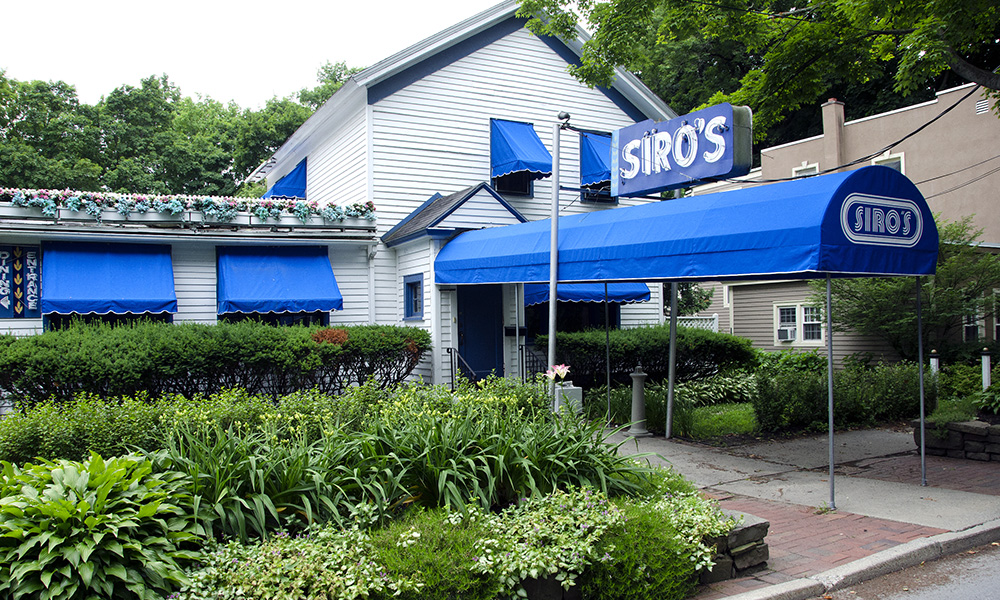
Step 8: Keep the Party Going
While the track will likely be closed to spectators, Saratoga restaurants will be open for business, even if only at 50 percent capacity (per the governor’s orders), so hit the town after the last race of the day. Siro’s, the historic after-track hangout for Saratoga’s highest rollers, is planning to open its outdoor area in some capacity, and the Horseshoe Inn Bar & Grill, another racing season favorite, has been open since mid-June. “We’re gonna have six TVs outside,” says Horseshoe co-owner Brandon Drellos. Other bars and restaurants, such as Prime at Saratoga National and Racing City Brewing, will also be open and airing televised coverage from Saratoga Race Course on race days.
Step 9: Support a Good Cause
A huge part of the Saratoga season experience is the social scene, and while several organizations have chosen to cancel their annual fundraisers, as is the case with the Saratoga Hospital Gala, others have postponed them until later in the year or opted to take them virtual. One such organization is LifePath (formerly Senior Services of Albany), whose annual Travers Wine Tasting is moving from the Lodge at Saratoga Casino Hotel to the web. At press time, the details of the evening weren’t finalized yet, but LifePath was planning on having an online auction, social media challenge, raffle and wine pull, per the organization’s director of marketing and special events, Maria Jones. Tune in to the event, scheduled for August 28, and consider making a contribution to those charities that aren’t having fundraisers this year.
Step 10: Tune in to the Sales
Another racing season tradition that Saratogians will be missing out on is Fasig-Tipton’s Saratoga Sale, typically held at the auction company’s George Street location in early August. This year’s auction has been combined with Fasig-Tipton’s July sale and New York–bred sale into one mega-auction taking place in Kentucky September 9-10. “Normally, our sales are open to the public, but we’re not sure if that’s going to be the case this year,” says Anna Seitz, Fasig-Tipton’s client development and public relations manager. Either way, the sale will be livestreamed on the company’s website, fasigtipton.com, and those interested in purchasing a Thoroughbred will be allowed to bid online. “It would’ve been our 100th year of selling in Saratoga,” Seitz says. “So we might go ahead and celebrate that next year.”
BOTTOM LINE: There’s no denying that Saratoga is going to look a lot different this summer, but that doesn’t mean we—locals and tourists alike—can’t enjoy it. And it certainly doesn’t mean the magic of the Saratoga season is lost forever. “We’re making alternate arrangements to see people, be with people, but still take in the atmosphere of the track to support that culture of Saratoga Springs,” Poirier says. “I hope the people that come up from New York City or out of state to do the track stay involved with the culture that they’ve come up to see every summer. I hope they still come up and spend the time in Saratoga and support the local economy because for us who live here, it’s our livelihood.”

